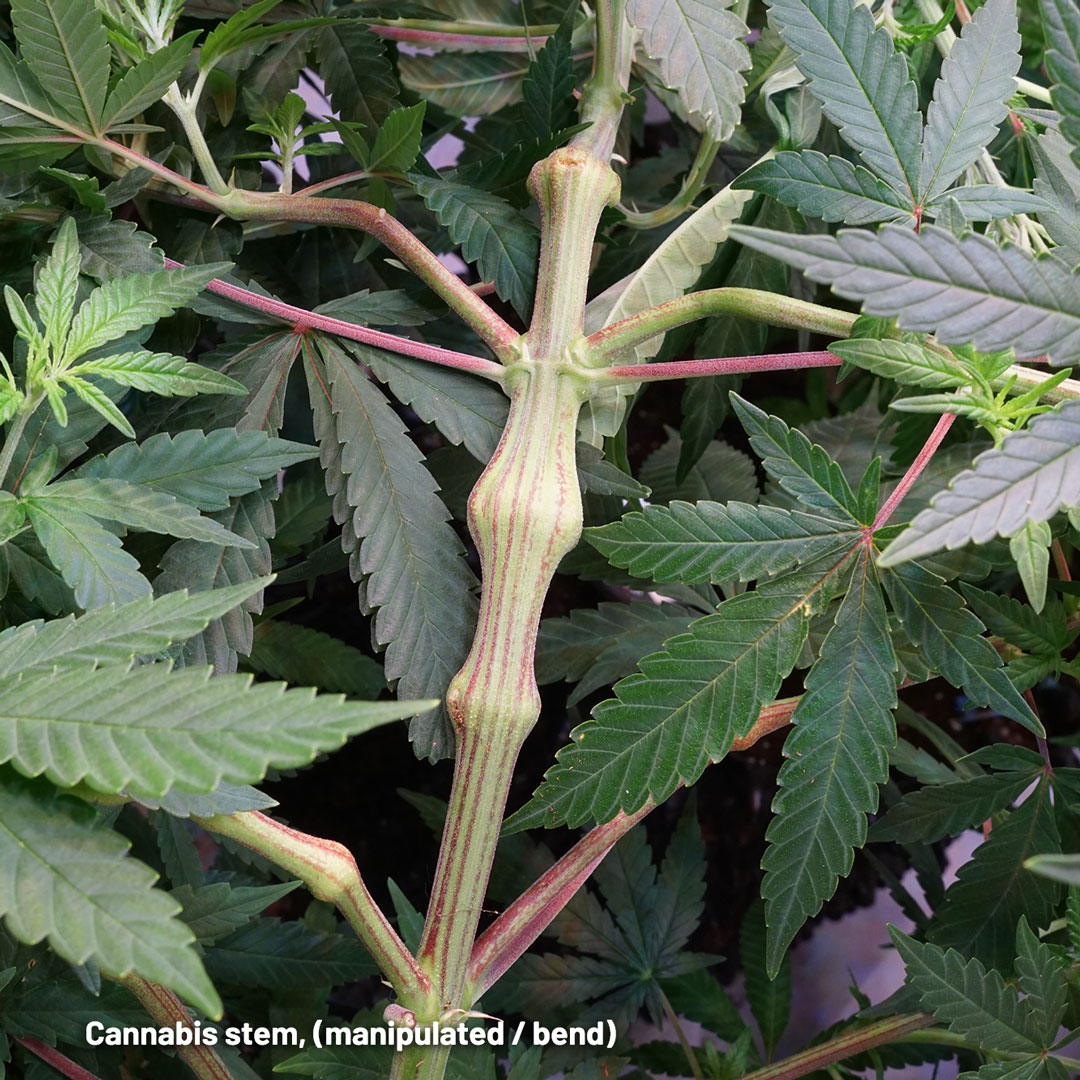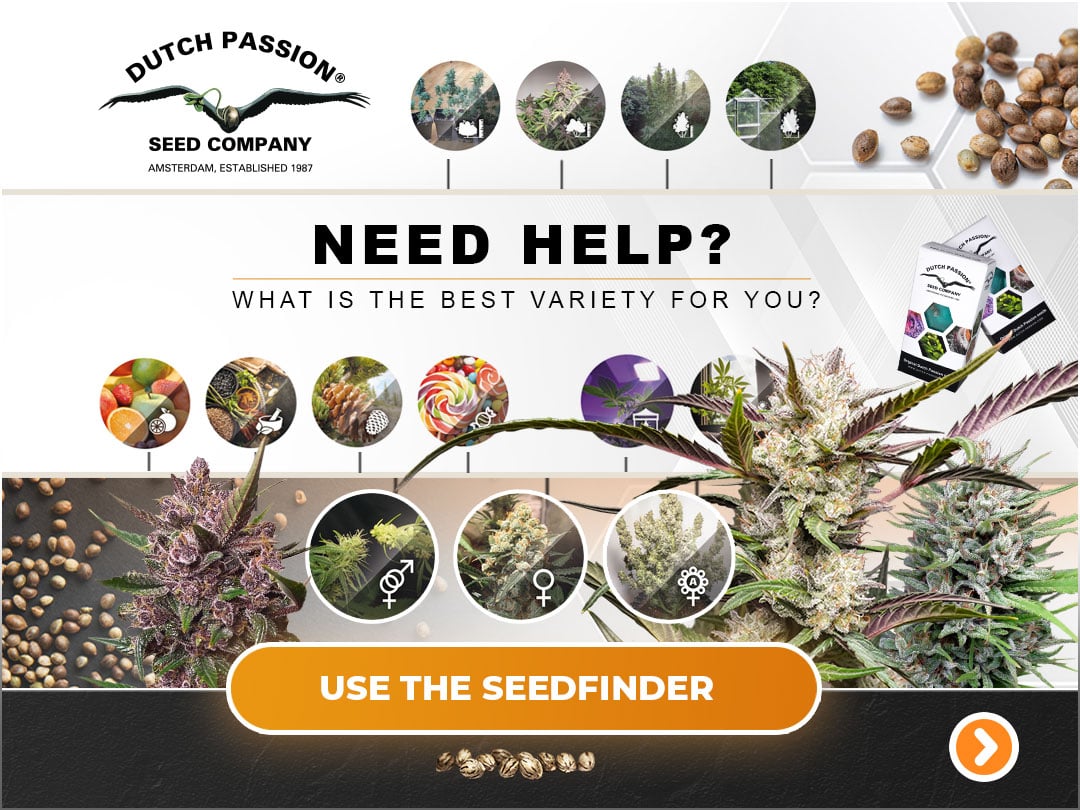Breaking down the cannabis bud structure

The cannabis plant remains one of our most treasured crops. How many other crops reward their grower so richly? How many plants deliver such joy and satisfaction? From the iconic leaf shape to the glittering, sticky and aromatic buds, cannabis draws our gaze like no other. The more knowledge/understanding the grower has about their cannabis plant, the better their ability to optimise the growth. Read our detailed guide to learn more and improve your own skills.
How are cannabis buds made?
For most cannabis growers the buds, and the terpenes/cannabinoids produced by them, are the most important part of the cannabis plant. Optimise the nutrients, lighting and environment and the buds will swell and merge forming thick, long blooms.
Start with the best cannabis seeds and you can expect proven genetics that will deliver heavy crops of Grade-A cannabis buds. In nature, the cannabis buds act as the host for the cannabis seeds which form after pollination. In practise most cannabis growers work hard to ensure that no pollination occurs, this allows the plant to focus her biochemical pathways to produce extra cannabinoids/terpenes rather than use the energy to produce seeds.
Ever since feminised cannabis seeds were first created by Dutch Passion in the 1990’s the overwhelming majority of growers switched to the use of feminised seeds. These give rise to 95%+ mature female cannabis plants.
The different parts of a cannabis bud
Within the cannabis bud structure there are several different plant parts, all of which play a key role. Knowing a little more about the form and function of the female cannabis plant can help the grower understand more about the growth. The most knowledgeable cannabis growers tend to be the ones that produce the best quality harvests. Cannabis bud structure isn't too difficult to understand and shows many similarities with other plant species.
Calyx (or bract)
-cannabis-parts-explained.jpg)
A long cannabis bloom is composed of many closely packed cannabis buds. Cannabis buds are made from numerous calyxes. These are small tear-drop shaped structures that would normally encase the cannabis seed, if pollination were to occur. The calyxes are positioned between the stem and branches, they first appear as pre-flowers. Once bloom has begun the calyxes multiply, usually coated in sticky resin. For many cannabis growers, the favourite part of the cannabis bud structure are the sticky, potent calyxes!
Pistils and stigmas

Pistils provide part of the sexual function in cannabis. They have a single ovule that gives rise to two stigmas. The stigmas are the familiar hairs that emerge from the calyx. Initially they are white. As harvest approaches the stigmas often take on a more orange hue (occasionally red, pink or other colours are possible).
If the stigmas turn orange/brown quicker than expected it could be a sign that pollination has occurred. That may happen due to a deliberate pollination, or an accidental pollination if e.g. a hermaphrodite cannabis plant is present in the grow room.
Colas

A cannabis cola is the name often given to a long, fat bloom. Good quality sativa cannabis seeds are known for producing long buds. The cola is formed when a healthy cannabis plant forms numerous buds which grow closely together. In the best cases, a cola can be as long as your arm and just as wide!
Sugar Leaves

Sugar leaves are the small resin-soaked leaves that can be found in and around the blooms. Found within the cannabis bud structure, sugar leaves are often removed during the trimming process. However, due to the dense trichome coverage the sugar leaves are rarely thrown away. Instead many growers will use them to create cannabis concentrates and cannabis extracts, such as hash, cannabis oil, shatter etc.
When the sugar leaves are particularly small the grower often simply leaves them in the buds. Removing them can be fiddly, and possibly unnecessary since they are loaded with generous resin levels.
| Related: |
| How to harvest, dry and cure cannabis |
Trichomes

One of the favourite parts of the cannabis bud structure, trichomes are the mushroom-shaped microscopic resin glands which store terpenes and cannabinoids. They are thought to be partly designed to deter insect infestation. The sticky layer traps pests and is thought to be toxic to many.
Recent research also suggests that the chemicals in the trichomes can protect the plant from UV light damage. But to the connoisseur cannabis seed grower, the presence of a thick & pungent trichome layer is a guarantee of quality, potency and satisfaction!
| Related: |
| Cannabis trichomes - everything you need to know |
Stem

The cannabis stem forms the backbone of the plant from which the branches and blooms will emerge. However, the stem (as well as the branches) can be manipulated, bent, cut etc to allow heavier harvests.
| Related: |
| Cannabis high stress training (HST) tutorial |
Female vs male cannabis buds

Most cannabis growers are familiar with the shape/smell of female cannabis buds. Ever since the arrival of feminised cannabis seeds, male cannabis plants have been in short supply and tend to be quickly disposed of. Male cannabis ‘buds’ look more like small balls, or miniature ‘grapes’ that contain pollen. Once the pollen sacs have ruptured, the pollen is spread where it hopes to land on a stigma and create the process of cannabis seed production.
Most growers, with the exception of those making their own cannabis seeds, seek to avoid male cannabis flower at all costs. This is to prevent their harvest of cannabis buds being reduced to seed.
| Related: |
| Autoflower vs feminised cannabis seeds explained |
Sativa vs indica cannabis buds

Sativa cannabis genetics tended to evolve in tropical, moist and warm conditions. As a result of this, and to minimise chances of mold/bud rot, sativa cannabis strains tend to have a slightly more open and airy cannabis bud structure. This allows the sativa buds slightly more latitude/air flow before they suffer the dreaded botrytis mold infection.
Indica cannabis buds often evolved in slightly less humid conditions, often in cooler more mountainous and less tropical environments. That’s why the cannabis bud structure for indicas is slightly denser and more compact than that of sativa strains. The threat of mold is often much less in a typical indica habitat compared to a tropical sativa habitat - that is reflected in the way the cannabis bud structure evolved.
| Related: |
| Indica vs Sativa: Origins, Uses and Effects |
Cannabis buds colours meaning
When growing cannabis seeds (either feminised seeds or autoflower seeds) the results you achieve will depend very much on the environmental conditions used during cultivation. A pro-grower with LED grow lights and an optimised environment may get significantly superior harvests (and greater THC levels) compared to a less experienced grower with limited cultivation skills. Even when using the same cannabis genetics.
Different environmental conditions and temperatures can influence cellular biochemistry. One side effect with cooler conditions can be more autumnal hues to the bud colours. But certain cannabis strains, for example Auto Blackberry Kush, can also produce striking bud blue/purple bud colours simply due to the genetics. Different colours in the cannabis buds can be due to genetic factors, environmental factors…or both.
| Related: |
| What do different weed colours indicate? |
Growing the best cannabis buds
To get the best quality cannabis buds you need to combine the best cannabis genetics with a good grow environment. Even the world’s best cannabis grower can’t accomplish much with low quality cannabis seeds, buy the finest you can from a supplier with a solid reputation and perhaps a cannabis cup or two.
Do your utmost to optimise grow room conditions and the genetics should do the rest. These days LED grow lights are widely regarded as the best quality light source, they produce the highest THC levels and terpene content and are highly recommended.
































